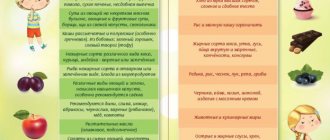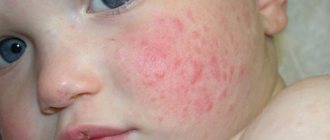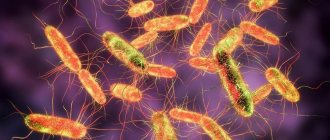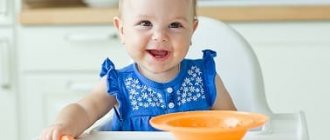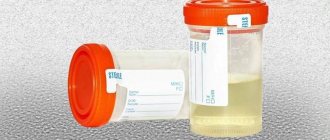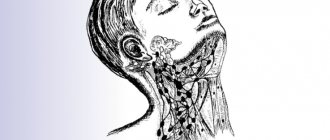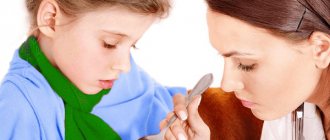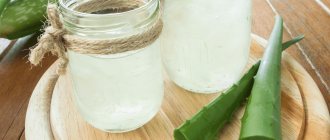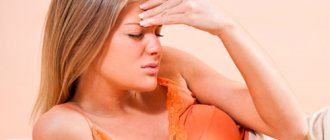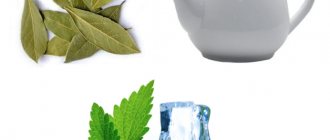General rules
Giardiasis belongs to a group of parasitic infestations, which is caused by a single-celled parasite, Giardia, which primarily affects the small intestine and is often accompanied by neurological and allergic symptoms.
Giardia has a variety of negative effects on the host's body. Vegetative forms of the parasite, fixing on the surface of enterocytes , consume ready-made nutrients, cause mechanical and toxic damage to the intestinal mucosa, thereby disrupting its absorption function and trigger a number of pathological processes: impaired enzyme , the formation abdominal syndrome , impaired liver function, sensitization of the human body with products decay and vital activity of Giardia, the formation of allergic dermatitis , decreased synthesis of immunoglobulins , development dysbiosis .
The disease is characterized by a polymorphism of clinical signs from giardiasis, which occurs without clinical manifestations, to manifest diseases in various forms - intestinal, biliary-pancreatic, mixed. Thus, with Giardia in adults and children with various forms of the disease, only abdominal syndrome can manifest itself as diarrhea , abdominal pain, nausea and anorexia , constipation , intestinal dysbiosis , lactase deficiency.
Treatment of giardiasis, along with specific drug treatment, involves the appointment of special therapeutic nutrition. The diet for giardiasis is aimed at creating unfavorable conditions for the life and reproduction of parasites, reducing inflammation of the intestinal mucosa and irritation of the gastrointestinal tract, regulating stool and correcting intestinal microflora.
The basic principles of dietary nutrition for giardiasis are:
- maximum exclusion from the diet of foods rich in simple carbohydrates, since their carbon-water-saturated environment is favorable for the life and reproduction of parasites;
- introducing into the diet foods that create an acidic environment, which is extremely unfavorable for Giardia;
- consumption of products and food that do not irritate the mucous membranes of the gastrointestinal tract already damaged by Giardia;
- inclusion in the diet of a large number of foods containing fiber (unsweetened fruits, vegetables);
- limiting fat intake;
- protein content at the rate of 0.7-1 g per kilogram of body weight;
- limiting the consumption of whole milk in the diet, as well as dairy products with fillers;
- exclusion of the frying process from the methods of culinary processing of products;
- fractional diet (5-6 times a day);
- drinking regime at the level of 1.5-2 l/day of free liquid, it is desirable to include sour jelly and fruit drinks in the diet.
Table No. 4 can be taken as the basis for therapeutic nutrition , the indications for which are intestinal diseases ( enteritis and enterocolitis , diarrhea of any etiology). The main task of Table 4 is to limit the content of carbohydrates and fats in the diet. In case of giardiasis, a modification of this table is prescribed to increase the content of protein and fiber in the diet.
The basis of the diet consists of low-fat meat/vegetable broths, decoctions of buckwheat and rice, lean meats (veal, skinless chicken, turkey, rabbit). The diet should include foods rich in dietary fiber, which act as nutritional sorbents - bran, vegetables (except potatoes) in any form (stewed, steamed, boiled), viscous porridge, baked apples, pears, cereals, dried fruits, grain bread. It is recommended to consume foods that form an acidic environment - taking natural juice from acidic vegetables/fruits (tomatoes, pomegranates, oranges, lingonberry juice, cranberries). In between meals, it is recommended to snack on fresh sour fruits and berries.
Products containing easily digestible carbohydrates - sugar and products containing it, jam, honey, jam, sweets, confectionery - are excluded from the diet. It is not allowed to consume foods with a long digestion period - fatty meats, canned meat and fish, flour and bakery products, whole milk and sour cream, potatoes, pasta, and products that irritate the gastrointestinal mucosa - various seasonings, hot peppers, garlic, coffee, carbonated and alcoholic beverages, products with dyes and preservatives, sugar substitutes.
During the restoration of digestive function after complete eradication of Giardia from the intestines, dietary nutrition is adjusted depending on the degree of disturbance of digestion, absorption and the individual characteristics of the body. Conditions of disturbed intestinal biocenosis, which occurs in every second patient, require special nutritional correction. In such cases, the diet should be enriched with low-fat fermented milk products without foreign additives, and also take bifido / lactobacillus . In case of giardiasis, which occurs with clinical symptoms of allergic dermatitis , urticaria the patient is prescribed a hypoallergenic diet.
Diet for children with giardiasis
The treatment of giardiasis includes a special therapeutic diet - we will look at the correct menu for giardiasis in children, the menu for the week, sample recipes for dishes, the basic principles of balanced nutrition for giardiasis in children, recommended and prohibited foods and methods of preparing them, we will provide a table of useful and harmful for child products for Giardia infestation.
The essence of treating giardiasis with diet
In the treatment of children with protozoan parasite infestation, along with drug treatment, diet plays an important role.
Giardiasis in children is described in more detail in two articles. Giardiasis treatment in a child, drug dosage regimens, find out by following the link. It may also be helpful to find out the symptoms and treatment of Giardia in children. It is almost impossible to recover from the parasite without diet.
A proper diet can improve the condition of the infected person, as well as create conditions in the body that are unsuitable for the existence of parasites.
Excluding most carbohydrates from the diet during giardiasis reduces the load on the liver, stabilizes the gastrointestinal tract and improves the production of enzymes.
For the normal functioning of the body, cereals and non-starchy vegetables remain on the menu.
Due to the exclusion of carbohydrates, acidity in the gastrointestinal tract increases, which leads to the death of Giardia. And the reduced load on the liver will prepare the body for possible drug treatment.
Basic 5 principles of special therapeutic nutrition
The therapeutic diet for parasitic infection is structured in such a way as to create the most unsuitable environment for parasites in the body. Any protozoan parasite is not able to survive without food and in an acidic environment.
To increase acidity in the gastrointestinal tract, simple carbohydrates are removed from the menu, the proportion of protein is increased, and sour fruits and vegetables are added.
In addition to carbohydrates, milk containing lactose should not be consumed. It can adversely affect the intestines, cause gas and interfere with treatment.
The main principles in therapeutic nutrition for giardiasis, in addition to increasing acidity, is a gentle effect on the stomach and intestines. This improves enzyme secretion and intestinal motility.
Dishes for patients with giardiasis are prepared only from approved products. The method of preparation is also taken into account. Patients should not eat fried or baked foods with a hard crust.
Often, for giardiasis, diets No. 1, 3 and 4 are prescribed. But their use is not correct, since the Pevzner diet, on the contrary, recommends consuming large amounts of carbohydrates and reducing acidity in the digestive system.
Authorized Products
For giardiasis, the diet includes lean varieties of red meat and poultry (turkey, chicken). It is recommended to cook soups in vegetable broth with the addition of cereals and vegetables, which can be seasoned with any garden herbs. Bread - only unleavened. All cereals (except rice and wheat) can be used as a side dish. Vegetables in any form should prevail in the diet.
Allowed are zucchini stuffed with vegetables, vegetable cabbage rolls, stews, casseroles of vegetables and cereals, vegetable caviar and vegetable cutlets with the addition of herbs and seasonings. Fermented milk products in the diet should be represented by natural yogurt, acidophilus milk and cottage cheese. Recommended drinks include vegetable juices, rosehip decoction, lingonberry, cranberry decoctions, fruit drinks made from these berries, and green tea.
Table of permitted products
| Proteins, g | Fats, g | Carbohydrates, g | Calories, kcal | |
Vegetables and greens | ||||
| spicy vegetables | 2,8 | 0,5 | 5,3 | 36 |
| vegetables legumes | 9,1 | 1,6 | 27,0 | 168 |
| zucchini | 0,6 | 0,3 | 4,6 | 24 |
| broccoli | 3,0 | 0,4 | 5,2 | 28 |
| sauerkraut | 1,8 | 0,1 | 4,4 | 19 |
| cauliflower | 2,5 | 0,3 | 5,4 | 30 |
| green onion | 1,3 | 0,0 | 4,6 | 19 |
| bulb onions | 1,4 | 0,0 | 10,4 | 41 |
| carrot | 1,3 | 0,1 | 6,9 | 32 |
| radish | 1,2 | 0,1 | 3,4 | 19 |
| white radish | 1,4 | 0,0 | 4,1 | 21 |
| turnip | 1,5 | 0,1 | 6,2 | 30 |
| beet | 1,5 | 0,1 | 8,8 | 40 |
| celery | 0,9 | 0,1 | 2,1 | 12 |
| asparagus | 1,9 | 0,1 | 3,1 | 20 |
| tomatoes | 0,6 | 0,2 | 4,2 | 20 |
| pumpkin | 1,3 | 0,3 | 7,7 | 28 |
| garlic | 6,5 | 0,5 | 29,9 | 143 |
| spinach | 2,9 | 0,3 | 2,0 | 22 |
| sorrel | 1,5 | 0,3 | 2,9 | 19 |
Fruits | ||||
| pineapples | 0,4 | 0,2 | 10,6 | 49 |
| oranges | 0,9 | 0,2 | 8,1 | 36 |
| pomegranate | 0,9 | 0,0 | 13,9 | 52 |
| lime | 0,9 | 0,1 | 3,0 | 16 |
| lemons | 0,9 | 0,1 | 3,0 | 16 |
| tangerines | 0,8 | 0,2 | 7,5 | 33 |
| apples | 0,4 | 0,4 | 9,8 | 47 |
Berries | ||||
| cowberry | 0,7 | 0,5 | 9,6 | 43 |
| blackberry | 2,0 | 0,0 | 6,4 | 31 |
| cranberry | 0,5 | 0,0 | 6,8 | 26 |
Mushrooms | ||||
| fresh chanterelles | 1,6 | 1,1 | 2,2 | 20 |
| dried chanterelles | 22,3 | 7,6 | 24,2 | 261 |
Nuts and dried fruits | ||||
| almond | 18,6 | 57,7 | 16,2 | 645 |
Cereals and porridges | ||||
| buckwheat (kernel) | 12,6 | 3,3 | 62,1 | 313 |
| corn grits | 8,3 | 1,2 | 75,0 | 337 |
| pearl barley | 9,3 | 1,1 | 73,7 | 320 |
| millet cereal | 11,5 | 3,3 | 69,3 | 348 |
Raw materials and seasonings | ||||
| mustard | 5,7 | 6,4 | 22,0 | 162 |
| ginger | 1,8 | 0,8 | 15,8 | 80 |
| cardamom | 10,8 | 6,7 | 68,5 | 311 |
| coriander | 1,5 | 0,0 | 5,0 | 25 |
| cinnamon | 3,9 | 3,2 | 79,8 | 261 |
| turmeric | 12,7 | 13,8 | 58,2 | 325 |
| nutmeg | 20,0 | 50,0 | 7,0 | 556 |
| dried oregano | 11,0 | 10,3 | 21,6 | 306 |
| thyme (thyme) | 5,6 | 1,7 | 10,5 | 101 |
| sage | 3,7 | 0,4 | 8,0 | 49 |
Dairy | ||||
| kefir | 3,4 | 2,0 | 4,7 | 51 |
| curdled milk | 2,9 | 2,5 | 4,1 | 53 |
| acidophilus | 2,8 | 3,2 | 3,8 | 57 |
| yogurt | 4,3 | 2,0 | 6,2 | 60 |
Cheeses and cottage cheese | ||||
| cottage cheese | 17,2 | 5,0 | 1,8 | 121 |
Meat products | ||||
| boiled beef | 25,8 | 16,8 | 0,0 | 254 |
| boiled veal | 30,7 | 0,9 | 0,0 | 131 |
| rabbit | 21,0 | 8,0 | 0,0 | 156 |
Bird | ||||
| boiled chicken | 25,2 | 7,4 | 0,0 | 170 |
| turkey | 19,2 | 0,7 | 0,0 | 84 |
Eggs | ||||
| chicken eggs | 12,7 | 10,9 | 0,7 | 157 |
Oils and fats | ||||
| peasant unsalted butter | 1,0 | 72,5 | 1,4 | 662 |
| corn oil | 0,0 | 99,9 | 0,0 | 899 |
| olive oil | 0,0 | 99,8 | 0,0 | 898 |
| ghee | 0,2 | 99,0 | 0,0 | 892 |
Non-alcoholic drinks | ||||
| mineral water | 0,0 | 0,0 | 0,0 | — |
| green tea | 0,0 | 0,0 | 0,0 | — |
Juices and compotes | ||||
| Orange juice | 0,9 | 0,2 | 8,1 | 36 |
| carrot juice | 1,1 | 0,1 | 6,4 | 28 |
| pumpkin juice | 0,0 | 0,0 | 9,0 | 38 |
| * data is per 100 g of product | ||||
Fully or partially limited products
With giardiasis, all concentrated broths (fish, meat, mushroom) are excluded from the diet. The consumption of fatty, smoked meat, pickled, salted, fried foods, canned fish and meat and semi-finished products is not allowed. Products containing easily digestible carbohydrates are limited - honey, sugar, jam, jam, sweets, confectionery, yeast baked goods. Dried fruits and sweet fruits are not allowed. Products with preservatives and artificial colors are not allowed in the diet. Sweet juices, strong coffee, kvass, sweet carbonated and alcohol-containing drinks are excluded from drinks.
Table of prohibited products
| Proteins, g | Fats, g | Carbohydrates, g | Calories, kcal | |
Vegetables and greens | ||||
| canned vegetables | 1,5 | 0,2 | 5,5 | 30 |
| canned cucumbers | 2,8 | 0,0 | 1,3 | 16 |
| pickles | 0,8 | 0,1 | 1,7 | 11 |
| canned tomatoes | 1,1 | 0,1 | 3,5 | 20 |
Fruits | ||||
| apricots | 0,9 | 0,1 | 10,8 | 41 |
| avocado | 2,0 | 20,0 | 7,4 | 208 |
| watermelon | 0,6 | 0,1 | 5,8 | 25 |
| bananas | 1,5 | 0,2 | 21,8 | 95 |
| pears | 0,4 | 0,3 | 10,9 | 42 |
| melon | 0,6 | 0,3 | 7,4 | 33 |
| figs | 0,7 | 0,2 | 13,7 | 49 |
| plums | 0,8 | 0,3 | 9,6 | 42 |
Berries | ||||
| grape | 0,6 | 0,2 | 16,8 | 65 |
| strawberry | 0,8 | 0,4 | 7,5 | 41 |
Nuts and dried fruits | ||||
| dried apricots | 5,2 | 0,3 | 51,0 | 215 |
| dried apricots | 5,0 | 0,4 | 50,6 | 213 |
| dates | 2,5 | 0,5 | 69,2 | 274 |
Cereals and porridges | ||||
| Wheat groats | 11,5 | 1,3 | 62,0 | 316 |
| white rice | 6,7 | 0,7 | 78,9 | 344 |
Confectionery | ||||
| jam | 0,3 | 0,2 | 63,0 | 263 |
| jelly | 2,7 | 0,0 | 17,9 | 79 |
Chocolate | ||||
| chocolate | 5,4 | 35,3 | 56,5 | 544 |
Raw materials and seasonings | ||||
| brewer's yeast | 12,7 | 2,7 | 0,0 | 75 |
| mayonnaise | 2,4 | 67,0 | 3,9 | 627 |
| sugar | 0,0 | 0,0 | 99,7 | 398 |
Dairy | ||||
| milk | 3,2 | 3,6 | 4,8 | 64 |
| cream | 2,8 | 20,0 | 3,7 | 205 |
Meat products | ||||
| pork | 16,0 | 21,6 | 0,0 | 259 |
Bird | ||||
| smoked chicken | 27,5 | 8,2 | 0,0 | 184 |
| duck | 16,5 | 61,2 | 0,0 | 346 |
| smoked duck | 19,0 | 28,4 | 0,0 | 337 |
| goose | 16,1 | 33,3 | 0,0 | 364 |
Fish and seafood | ||||
| dried fish | 17,5 | 4,6 | 0,0 | 139 |
| smoked fish | 26,8 | 9,9 | 0,0 | 196 |
| black caviar | 28,0 | 9,7 | 0,0 | 203 |
| canned fish | 17,5 | 2,0 | 0,0 | 88 |
Oils and fats | ||||
| animal fat | 0,0 | 99,7 | 0,0 | 897 |
| cooking fat | 0,0 | 99,7 | 0,0 | 897 |
Non-alcoholic drinks | ||||
| cola | 0,0 | 0,0 | 10,4 | 42 |
| coffee | 0,2 | 0,0 | 0,3 | 2 |
| lemonade | 0,0 | 0,0 | 6,4 | 26 |
| Pepsi | 0,0 | 0,0 | 8,7 | 38 |
| sprite | 0,1 | 0,0 | 7,0 | 29 |
| black tea | 20,0 | 5,1 | 6,9 | 152 |
| * data is per 100 g of product | ||||
Menu (Power Mode)
The menu and diet for giardiasis can vary significantly depending on the form of the disease. So, with the intestinal form of giardiasis, permitted products are included in the menu, according to the modified Table No. 4 according to Pevzner.
In case of severe allergic reactions due to giardiasis, the menu includes products with low hypoallergenic activity.
In the hepatobiliary form of giardiasis with the development of cholecystitis Diet No. 5 or its variations are prescribed Recipes for preparing dishes for giardiasis are standard, and the cooking technology does not require any special restrictions, with the exception of the frying process.
What can you eat?
The diet for giardiasis for children and adults should include a lot of acidic foods. This is necessary in order to create an acidic environment for the parasites, which they do not like. You can include berries, apples, lemons, and cranberries in your diet. During the day you need to drink fruit drinks, acidified compotes and teas. Instead of regular black tea and coffee, you can brew and drink chamomile and green tea. They have an anti-inflammatory effect and remove toxins from the body.
It is important to drink different compotes throughout the day.
Vegetables are a must. Thanks to their fiber, mechanical cleansing of the intestines from lamblia will occur. They can be eaten raw or steamed or stewed. You can eat meat, but it must be lean. In addition, you are allowed to eat lean fish, chicken, cottage cheese, and porridge cooked in water.
Recipes for giardiasis
Below are some special recipes for preparing dishes recommended for the formation of an acidic environment for giardiasis.
Drink of lingonberries and cranberries
Grind fresh or frozen (previously defrosted) lingonberries/cranberries in a meat grinder until pureed. Place in a deep saucepan, combine the mixture with sugar and add clean water, boil and let sit for 20-30 minutes. Cool the finished fruit drink and strain.
Compote of oranges and lemon
Wash 1-2 sweet oranges and 1 lemon, remove the zest and peel the skin. Thinly slice the zest into strips, place in a bowl, add hot water and leave for a few minutes, place in a colander and let the water drain. Pour sugar and zest into boiling water. Boil for 3 minutes and let cool. Cut the orange and lemon pulp into slices and place in a saucepan. Let's brew. The drink is served chilled.
Let's sum it up
Thus, for effective treatment with a diet for giardiasis for children and adults, it is enough to follow the following rules:
- provide an acidic environment in the intestines;
- reduce the load on the intestines (eat small meals);
- eliminate all fast carbohydrates;
- boil or steam food;
- maintain hygiene;
- do daily wet cleaning.
According to reviews not only from people who were diagnosed with Giardia, but also from doctors, this diet is a very effective method of treatment, although it takes quite a long time. After about a month, a person begins to feel much better: symptoms of intoxication disappear, intestinal function is restored, and strength appears.
Of course, if the disease is very advanced, then you can combine diet and drug treatment. But even in this case, cleansing the body and saturating it with fiber and vitamins will not be superfluous.
For children
Giardiasis in children especially often occurs against the background of allergization of the body and immunosuppression , which clinically manifests itself most often in the form of urticaria and atopic dermatitis . Therefore, dietary nutrition in such cases is adjusted, and along with the treatment of giardiasis, a hypoallergenic diet . In the intestinal form, the diet for children is similar to the diet for adults, taking into account the child’s age. The diet for giardiasis in children must be supplemented with probiotics .
When treating Giardia in children of the first year of life who are breastfed, it is recommended to reduce (by about 1/3) the amount of food taken (milk, adapted formula). Feeding should be dosed in accordance with the meal schedule. If a child is infected with giardiasis from the mother, the child is gradually transferred to artificial feeding, and simultaneous treatment is carried out for mother and child.
How should a child eat with giardiasis?
The main thing in proper nutrition for giardiasis is the heat treatment of all products and the child’s observance of personal hygiene rules. Otherwise, treatment and especially diet may be ineffective and a relapse of the disease will soon occur.
Diet alone will not be enough. It is important to start taking antiprotozoal medications right away. The medication regimen is selected by the doctor.
You need to eat 5-6 times a day in small portions. This eating regimen is recommended not for a week, but until complete recovery.
Giardia affects the small intestine, and a large meal will lead to even greater digestive disturbances and deterioration of well-being. Food should be easily digestible and not irritate the mucous membrane of the digestive canal. 14–21 days – this is approximately how long you should keep your child on a diet. Your doctor will give you precise recommendations.
Products that are best suited for creating a menu during illness:
- Fermented milk products. Kefir, yogurt, fermented baked milk - they are all easily digestible, contain beneficial bacteria and reduce irritation of the intestinal mucosa.
- Eggs, fish and lean meats contain the required amount of protein. The latter is required by the child’s body to maintain strength.
- Porridge. Oatmeal, cooked in a jelly-like consistency, is especially useful. It will coat the walls of the digestive tract and reduce irritation. Porridges contain carbohydrates, microelements and vitamins.
- Baked vegetables and fruits. Thanks to heat treatment, they are easier to digest. They are sources of useful substances. For constipation, they can stimulate bowel movements.
This diet will contribute to more effective treatment of giardiasis.
Disease prevention and prognosis
The main point in preventing the development of giardiasis is teaching the child the rules of personal hygiene. He must wash his hands when coming from the street, before eating and after using the toilet. Parents should wean their children from the habit of biting nails, pens and pencils, and putting toys in their mouths.
The diet menu should remain the same until complete recovery, which is confirmed by laboratory testing.
In the absence of complications and timely treatment, the prognosis is favorable. The disease goes away without a trace. If hygiene rules are not followed, re-infection is possible. Giardia can survive in the environment for up to 3 weeks. After recovery, the house needs to be thoroughly cleaned.
Giardiasis is one of the diseases of “unwashed hands”. Children become infected with it due to violation of hygiene rules. Diet for giardiasis in children is an important part of therapy. Nutrition during the development of giardiasis should be light. Preference should be given to foods rich in protein, vitamins and microelements. You can choose your own recipes.
We also recommend reading: encopresis in children
Reviews and results
Reviews from the majority of patients undergoing treatment for giardiasis about the need to follow a diet are positive.
“... For almost six months the child suffered from severe allergies in the form of urticaria. Then a cough came along and we were diagnosed with acute bronchitis. But the cause of all this turned out to be Giardia, which was discovered, one might say, by accident. Treatment was prescribed, a hypoallergenic diet. The condition has returned to normal, but we are very afraid of re-infection in the kindergarten, since he most likely became infected there.”
